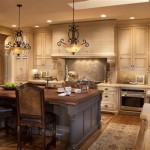How To Decorate Vases At Home: A Comprehensive Guide
Vases serve as versatile decorative elements, capable of enhancing the aesthetic appeal of any living space. They are not merely containers for flowers; they are standalone art pieces that can reflect personal style and complement existing décor. This article provides a detailed guide on various techniques for decorating vases at home, transforming ordinary glass or ceramic containers into personalized statements of artistry. The information provided herein aims to equip readers with the knowledge and inspiration to create unique and visually captivating vase designs.
Understanding Vase Materials and Their Suitability
The foundation of any successful vase decoration project lies in understanding the material from which the vase is constructed. Different materials react differently to various decorating techniques and mediums. Common vase materials include glass, ceramic, porcelain, metal, and even wood or natural fibers.
Glass vases, prized for their transparency, lend themselves well to both interior and exterior embellishment. Interior decoration, such as filling the vase with colored sand or decorative stones, allows the vase itself to remain unaltered, providing flexibility for future design changes. Exterior decoration on glass can range from simple paint applications to more complex techniques like etching or decoupage. Consider the type of glass – clear, frosted, or colored – as this will impact the final look.
Ceramic and porcelain vases, often opaque, offer a broader surface for painting and textural applications. Glazed ceramic provides a smooth, non-porous surface, ideal for acrylic paints and permanent markers. Unglazed ceramic, on the other hand, is more porous and may require priming before painting to ensure proper adhesion and prevent the paint from being absorbed into the material. The shape and texture of ceramic vases can also inspire design choices; a vase with intricate carvings, for instance, might be enhanced with metallic paint or highlighting techniques.
Metal vases introduce a different set of considerations. The inherent sheen of metal can be enhanced with polishing, or conversely, dulled with techniques like antiquing. Metal paints and patinas can be used to alter the color and appearance of the vase, creating a vintage or industrial look. The type of metal, such as copper, brass, or stainless steel, will influence the choice of appropriate decorating materials.
Vases made from wood or natural fibers, such as bamboo or wicker, often possess a rustic charm. These materials can be stained, painted, or adorned with natural elements like twine, shells, or dried flowers. The porous nature of these materials requires careful consideration when choosing paints or adhesives to ensure longevity and prevent damage.
Techniques for Vase Decoration: A Step-by-Step Approach
Once the vase material is understood, the next step involves selecting the appropriate decorating technique. A multitude of options are available, each offering a unique aesthetic outcome. These techniques range from simple DIY methods to more advanced artistic approaches. The following provides a detailed breakdown of several popular techniques:
Painting: Painting offers a versatile and customizable approach to vase decoration. Acrylic paints are a popular choice due to their durability, vibrant colors, and ease of use. Before painting, it is crucial to clean the vase thoroughly and, if necessary, apply a primer to ensure proper paint adhesion. For glass vases, consider using glass-specific paints that are designed to bond effectively with the surface. Detailed designs can be achieved using fine-tipped brushes or stencils. Consider various painting styles, such as ombre effects, geometric patterns, or floral motifs. Sealing the painted vase with a clear coat of varnish or sealant will protect the design and enhance its longevity.
Decoupage: Decoupage involves adhering paper cutouts to the surface of the vase, creating a layered and textured effect. Decorative paper, fabric scraps, or even pressed flowers can be used. The process typically involves applying a thin layer of decoupage adhesive to the vase, positioning the chosen cutouts, and then sealing the entire surface with multiple coats of adhesive. Mod Podge is a commonly used decoupage medium. Ensure that the paper cutouts are smoothed out to prevent air bubbles and wrinkles. The finished product can be further embellished with glitter, beads, or other decorative elements.
Mosaic: Creating a mosaic design on a vase involves adhering small pieces of tile, glass, or other materials to its surface. This technique yields a visually striking and tactile effect. Before starting, the vase surface should be cleaned and prepared with an adhesive suitable for the chosen mosaic materials. The individual pieces are then carefully positioned and adhered to the vase, leaving small gaps between them. Once the adhesive has dried, grout is applied to fill the gaps, creating a cohesive and polished look. Excess grout should be wiped away, and the surface cleaned thoroughly. Mosaic vases can be customized with various colors, shapes, and textures to create unique and eye-catching designs.
Textural Applications: Adding texture to a vase can significantly enhance its visual appeal. This can be achieved using a variety of materials, such as rope, twine, shells, beads, or even fabric. The material is typically adhered to the vase using a strong adhesive, such as hot glue or epoxy. When using rope or twine, wrap it tightly around the vase, creating a textured surface. Shells and beads can be strategically placed to create intricate patterns or designs. Fabric can be glued or wrapped around the vase, creating a soft and tactile covering. Consider the overall aesthetic and choose materials that complement the existing décor.
Etching: Etching is a technique that involves using chemicals or tools to create designs on glass surfaces. This method typically requires specialized etching cream or tools and should be performed with caution, following all safety guidelines. The desired design is first transferred onto the glass surface using a stencil or masking tape. Etching cream is then applied to the exposed areas, allowing it to react with the glass. After the recommended time, the cream is rinsed off, revealing the etched design. Etching creates a permanent and elegant effect, adding a touch of sophistication to glass vases.
Adding Embellishments: Embellishments can be added to any decorated vase to enhance its visual appeal. This includes elements like ribbons, charms, buttons, or even dried flowers. These embellishments can be attached using glue, wire, or other appropriate fasteners. When selecting embellishments, consider the overall style and color scheme of the vase. A simple ribbon tied around the neck of the vase can add a touch of elegance, while charms or buttons can add a playful and whimsical touch. Dried flowers can be glued onto the vase to create a natural and organic look.
Creative Concepts and Design Inspirations
Beyond the fundamental techniques, creativity plays a vital role in transforming a vase into a personalized art piece. Exploring different design concepts and drawing inspiration from various sources can lead to truly unique and captivating creations. The following outlines some creative concepts and design inspirations to consider:
Nature-Inspired Designs: Incorporating natural elements into vase decoration can create a harmonious and organic aesthetic. This can involve using natural materials like shells, pebbles, twigs, or dried flowers. Paint can also be used to depict natural scenes, such as landscapes, forests, or seascapes. The colors and textures should reflect the natural world, creating a sense of tranquility and serenity.
Geometric Patterns: Geometric patterns can add a modern and sophisticated touch to vase decoration. This can involve using stencils or masking tape to create precise lines and shapes. Experiment with different geometric forms, such as triangles, squares, circles, or hexagons. The color palette can be bold and contrasting or subtle and monochromatic, depending on the desired effect.
Abstract Art: Abstract art allows for free-flowing creativity and self-expression. This can involve using a variety of painting techniques, such as splattering, dripping, or blending colors. The focus is on creating a visually stimulating and emotionally evocative piece, rather than depicting a specific subject. Experiment with different colors, textures, and patterns to create a unique and personal abstract design.
Themed Vases: Vases can be decorated to reflect specific themes or occasions. For example, a vase decorated with holiday-themed embellishments can be used as a centerpiece for festive gatherings. A vase decorated with nautical-themed elements can evoke a sense of the sea. Consider the purpose and setting of the vase when choosing a theme and selecting appropriate decorating materials.
Upcycling and Repurposing: Existing items can be repurposed to create unique and sustainable vase designs. Old jars, bottles, or even tin cans can be transformed into stylish vases with a little creativity and effort. Paint, decoupage, or textural applications can be used to conceal the original material and give the vase a new and refreshed look. Upcycling not only reduces waste but also adds a personal touch to the décor.
Monochromatic Designs: Monochromatic designs create a sense of elegance and sophistication by using different shades of a single color. This can involve painting the vase in various tones of a chosen color or using embellishments that all fall within the same color family. Monochromatic designs are versatile and can complement a wide range of interior styles.
By understanding vase materials, mastering decorating techniques, and drawing inspiration from various sources, individuals can transform ordinary vases into personalized works of art. The key to successful vase decoration lies in experimentation, creativity, and a willingness to explore different styles and techniques. The result is a collection of unique and visually captivating pieces that enhance the aesthetic appeal of any home.

Top 10 Diy Vase Decorations Decor Penny

35 Vase Decorating Ideas That Ll Elevate Any Room Mod Podge Rocks

5 Quick Easy Ways To Decorate Plain Vases

Decorate A Vase 60 Diy Home Ideas Craftionary

12 Ideas For Decorating With Vases Eatwell101

Diy Home Decorating Blog In My Own Style Decor Easy Styles

15 Ways To Style A White Vase The Sunny Side Up Blog

35 Vase Decorating Ideas That Ll Elevate Any Room Mod Podge Rocks

65 Creative Vase Filler Ideas For Home Decor Craftionary

5 Creative Ways To Decorate Your Home With Vases
Related Posts







